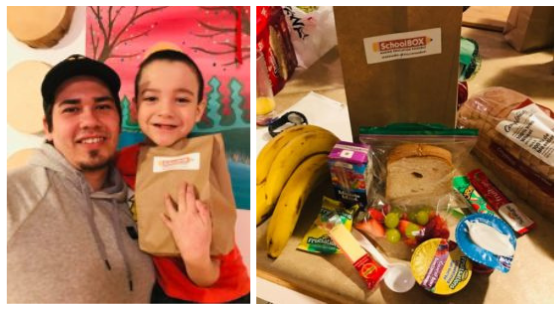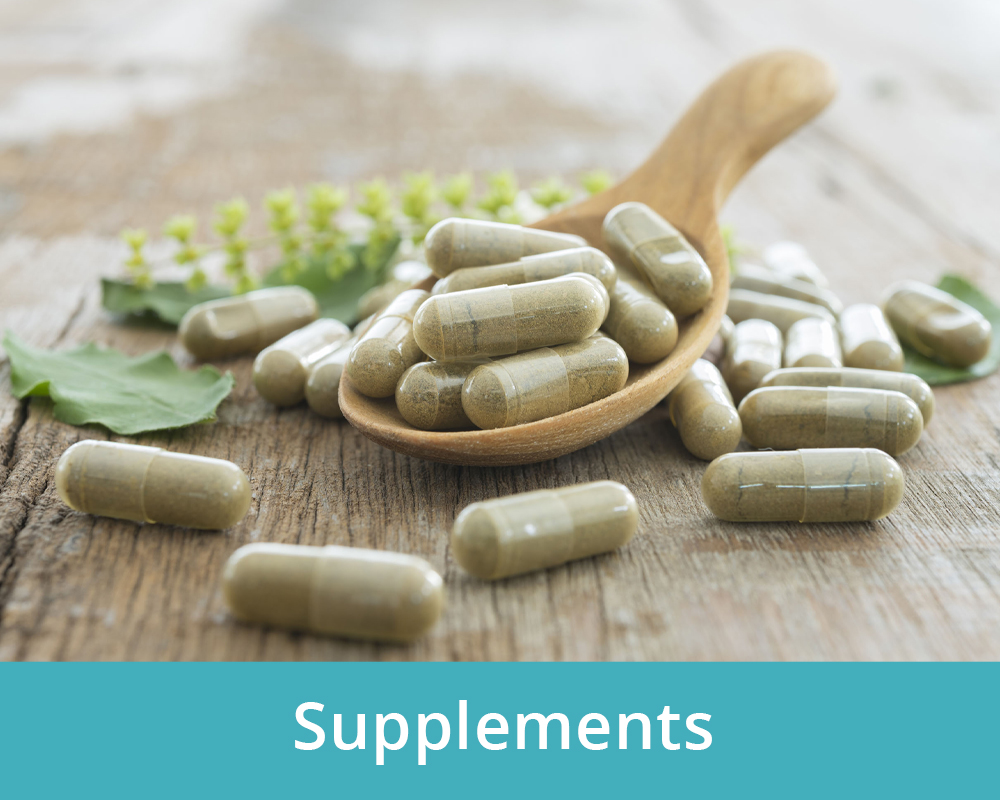
How Nutrition Can Support Individuals with Post Traumatic Stress Disorder (PTSD)

Post Traumatic Stress Disorder (PTSD) occurs as the result of a traumatic event such as a motor vehicle accident, physical or sexual assault, severe injury, abuse, military combat, and natural disasters, to list some of the most contributing factors. Approximately seven or eight out of every 100 people (7-8%) will develop PTSD in their lifetimes. (1)
PTSD symptoms can vary from person to person but frequently include the persistent reliving of the trauma, avoidance of any place that is a trauma-reminder, trouble sleeping, flash backs, mood changes, feeling on edge, and many others (2). PTSD can be debilitating and impacts an individual’s ability to socialize, work, and engage in day-to-day activities.
Interestingly, women are approximately twice as likely as men to develop PTSD despite the fact that more men than women experience trauma (60% and 51%, respectively) (3).
PTSD is a treatable condition, and many people with PTSD are able to successfully manage their symptoms after receiving effective treatment. However, if left untreated, PTSD can affect relationships and impact daily life making it difficult to work, study, eat, or sleep. It may also lead to suicidal thoughts.
Treatment for PTSD
Counselling, such as cognitive behavioral therapy and talk therapy, along with medications are the go-to approaches for PTSD. Unfortunately, the importance of nutrition is often overlooked as a therapeutic modality.
Diet and lifestyle changes can help manage PTSD symptoms by providing foods that calm the mind (down-regulating the nervous system) and avoiding foods that can over-stimulate the mind (up-regulate the nervous system). Similar nutrition strategies that support that those with depression, anxiety, stress management, and sleep will also generally be supportive for an individual with PTSD.
In this article, we’ll review four strategies that may help support individuals experiencing PTSD.
Top 4 Nutrition & Lifestyle Strategies to Support Individuals with Post-Traumatic Stress Disorder
-
Lifestyle Strategies for Managing PTSD
There are a number of strategies that can help better manage PTSD. First and foremost, it is important to learn about PTSD to help better understand your symptoms. Meditating, exercising, journaling, and attending a support group can all be helpful.
Additionally, removing unhealthy coping mechanisms such as drugs and alcohol is also key. Although drinking alcohol might feel that you are numbing the pain of PTSD, it is a depressant, and can fuel depression-like symptoms, which are already common among individuals that have PTSD.
-
Increase GABA Levels to Manage PTSD Symptoms
Gamma aminobutyric acid (GABA) is a naturally occurring amino acid that works as a neurotransmitter in your brain. GABA is considered an inhibitory neurotransmitter because when GABA attaches to GABA-receptors in the brain, it produces a calming effect. This can help reduce (or inhibit) feelings of anxiety, stress, and fear. (4)
In the diet, GABA can only be found in fermented foods such as kimchi, miso, and tempeh and within green tea. In modern day, most people consume GABA in supplement form. According to a 2006 article, two studies found that participants who took a GABA supplement had increased feelings of relaxation during a stressful event than those who took a placebo or L-theanine, another popular calming supplement. (6)
GABA has been shown to increase when adhering to the popular high fat, low carb, ketogenic diet promoting a sense of calmness and relaxation. (5)
Some beneficial bacteria that have taken up residence in our guts can also increase GABA receptors in the brain. When there are more GABA receptors in the brain, more GABA is being put to good use! This is a positive thing, especially since a decrease in GABA receptors has been associated with mood disorders such as chronic depression. (6) To feed the good bacteria in the gut you need to eat a variety of fresh fruits and vegetables and avoid sugar (which will feed the bad bacteria preferentially). Taking a probiotic and consuming fermented food such as sauerkraut can both help to increase the good bacteria in our gut.
-
Increase Intake Calcium and Magnesium to Reduce PTSD Symptoms
Calcium and magnesium are calming minerals. Deficiencies of calcium and magnesium are known to contribute to anxiety, difficulty sleeping, and feeling stressed and uptight – all symptoms that can commonly be experienced in someone that has PTSD.
Calcium and PTSD
A calcium deficiency can cause irregular moods, heart palpitations, fatigue, anxiety attacks, and depressed thoughts – which are all symptoms that a person can experience when they have PTSD. A calcium deficiency, also known as hypocalcaemia, can masquerade as anxiety or exacerbate symptoms in those who already have anxiety. (7)
To increase intake of calcium rich foods, include sources such as dairy products like kefir (which contains probiotics as well), goat or feta cheese, and low-sugar yogurt, dark green vegetables including kale, arugula, spinach, and broccoli, nuts including almonds, and calcium-fortified breads and cereals.
Magnesium and PTSD
A magnesium deficiency can also lead to many symptoms that are consistent with PTSD such as cardiac arrhythmia, muscle tremors, fibrillation, as well as being tense and unable to relax. A lack of magnesium may lead to high blood pressure, startle reactions, hypersensitivity to noise, and repeated tapping of hands and feet. It is important to make sure that you are getting enough magnesium in the diet along with exploring supplementation. If you are going to supplement it is best to choose magnesium bisglycinate as this form is effective for calming the nervous system.
Foods high in magnesium include dark chocolate or cacao, nuts and seeds, tofu, legumes, and avocado.
-
B-Vitamins Support A Healthy Stress-Response
When the body is under prolonged stress is tends to use up certain vitamins and minerals more readily. These tend to include calcium and magnesium (as identified above), vitamin C, and the B vitamins. The B vitamins, which include thiamine, niacin, B12 and folic acid, are often referred to as the ‘stress’ vitamins. There are many symptoms of B vitamin deficiency, and these include tension, irritability, difficulty managing stress, poor concentration, and anxiety – again, all symptoms that an individual with PTSD can experience.
B Vitamins are a crucial part of the process of manufacturing various neurotransmitters in the brain. Vitamin B6 is especially important, because not only is B6 essential for at least 100 enzymes, but it also helps the brain make the key neurotransmitters dopamine, serotonin, GABA, norepinephrine, and glutamate. These neurotransmitters help a person to feel motivated, happy, calm, and energized.
You may want to explore taking a B-Complex and incorporating foods high in B vitamins such as avocado, pork, plain yoghurt, salmon, chicken, eggs, sunflower seeds, chickpeas and tofu.
Summary
PTSD can be debilitating and impact individuals every day lives and ability to function. While it is clear that counselling, medications, and making healthy lifestyle choices are all important aspects of treating PTSD, it’s also essential not to overlook the role of diet.
Consuming foods high in calcium, magnesium, and the B vitamins are beneficial to potentially improve PTSD symptoms. Supplementing to address deficiencies that could exacerbate or compound their PTSD may also be considered. Consuming fermented foods to support healthy gut flora, as well as drinking green tea can help raise GABA levels in the brain to promote a sense of calmness and relaxation.
This is not an exhaustive list of nutrition strategies for PTSD but can be a great starting point in helping to better manage your symptoms.
References
- https://www.healthyplace.com/ptsd-and-stress-disorders/ptsd/ptsd-statistics-and-facts
- Tracy, N. (2021, December 15). PTSD Symptoms and Signs of PTSD, HealthyPlace. Retrieved on 2022, July 21 from https://www.healthyplace.com/ptsd-and-stress-disorders/ptsd/ptsd-symptoms-and-signs-of-ptsd
- https://www.healthyplace.com/ptsd-and-stress-disorders/ptsd/what-causes-some-women-to-develop-ptsd-symptoms
- https://www.healthline.com/health/gamma-aminobutyric-acid#What-is-GABA?
- Wang ZJ, Bergqvist C, Hunter JV, Jin D, Wang DJ, Wehrli S, Zimmerman RA. In vivo measurement of brain metabolites using two-dimensional double-quantum MR spectroscopy–exploration of GABA levels in a ketogenic diet. Magn Reson Med. 2003;49:615–619.
- https://korunutrition.com/hidden-secret-behind-low-mood-and-depression/
- https://tranquilitylabs.com/blogs/blog/calcium-anxiety-could-a-deficiency-be-behind-your-symptomsasein to cause a reaction in sensitized individuals









